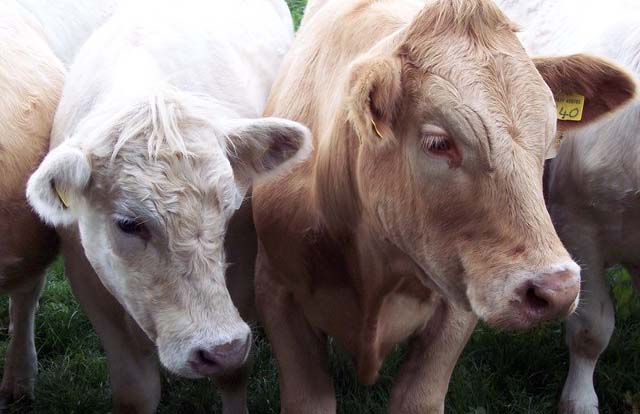
E. coli vaccinations for cattle could cut the number of human cases of the disease by up to 85%, but they are being delayed by conflicting responsibilities of public health agencies and economic drivers, according to a new report by Scottish scientists.
"We conclude that vaccination of cattle, the major reservoir for E. coli O157, could be an especially effective public health control against a serious disease," the report suggested.
The research was lead by a team of researchers at the University of Glasgow in collaboration with the University of Edinburgh, the Royal Veterinary College, Scotland’s Rural College, Health Protection Scotland, and the Scottish E. coli O157/VTEC Reference Laboratory.
Infection can cause death or life-long kidney damage, and is a major cause of acute renal failure in children. E. coli is spread through contaminated food or contact with cattle.
In the United States, the costs of healthcare, social care, and lost productivity come to around $600 million per year, whereas costs to the food industry from product recalls and reduced trade can run to tens of millions of dollars.
The scientists said a vaccination campaign was needed but they questioned who would pay for the campaign.
The 2009 Godstone Farm outbreak caused 93 cases, most of them being children. Whether vaccination would ever be widely used in the United Kingdom, North America, or the wider world will depend on the number of illnesses and deaths prevented, said the report, published in the Proceedings of the National Academy of Sciences, or PNAS.
But vaccines are available in Canada and the United States, though they are not widely used by farmers because of restricted licenses. The issue is gaining political momentum in Canada and a recent outbreak of the disease, along with the failure to vaccinate, prompted widespread concern within the media.
The report said the delay in fully licensing vaccines for widespread use among farmers highlighted 'conflicting responsibilities' of medical and veterinary agencies.
"The bodies charged with licensing vaccines in animals must typically certify that controls are not just safe but improve animal health," the report said.
The risk of E. coli O157 infection is particularly significant when the cattle are ‘super-shedding’ – excreting extremely high numbers of bacteria in their faeces for a limited period of time. Vaccines against the bacteria exist that can reduce super-shedding.
As a consequence, the researchers predict that vaccinating cattle could reduce human cases by nearly 85 percent, far higher than the 50 percent predicted by studies simply looking at the efficacy of current vaccines in cattle.
These figures provide strong support for the adoption of vaccines by the livestock industry, and work is now underway to establish the economic basis for such a programme of vaccination. In addition, research is continuing in Scotland by the same collaborative grouping to develop even more effective vaccines that would further reduce the impact on human disease.
Lead author, Dr Louise Matthews, Senior Research Fellow in the Institute of Biodiversity, Animal Health and Comparative Medicine, said: “E. coli O157 is a serious gastrointestinal illness. The economic impact is also serious – for instance studies in the US suggest that healthcare, lost productivity and food product recalls due to E. coli O157 can cost hundreds of millions of dollars each year.
“Treating cattle in order to reduce the number of human cases certainly makes sense from a human health perspective and, while more work is needed to calculate the cost of a vaccination programme, the public health justification must be taken seriously.”
In Scotland, an average of 235 culture positive cases of E. coli O157 infection per year (i.e. people who had the organism in their stools) were notified to Health Protection Scotland from 2008 to 2012.
The vaccines that are available currently have poor take-up: one version in the US is not fully licensed because medicines for veterinary use must show that animal health is improved. This is problematic because E. coli O157 does not harm cattle and assessing the impact of treatment involves coordination between human and veterinary health practitioners.
Senior author Professor Stuart Reid of the Royal Veterinary College added: “We increasingly recognise the fact that we share a common environment with the animals we keep – and inevitably the pathogens they harbour. This study is an excellent example the interface between veterinary and human medicine and of the concept of ‘One Health’ in action – controlling infections in animals can have a major impact on public health.”
